Electronic music plays very important role in the Czech Republic’s club scene. Techno in Prague is becoming something really big and the same passion for beats is now apparent in Brno, Pardubice and many other Czech towns.
We love techno, drum and base, jungle…
And as we like to look for them when travelling abroad we can imagine that you may like to do the same while visiting the Czech Republic.
We decided to create a little guide focusing on techno in Prague. We start by describing its development in the world and here in the Czech republic and end by adding the coolest current clubs playing techno in Prague.
So what is Techno?

Techno is probably the most famous name of the style of electronic dance music, and is often misinterpreted. Techno in Prague is for many people a synonym for electronic dance music at all.
It is hard to answer the question where the techno name actually came from. People got to know it in 1984, when the single Techno City was released. Since then, the title has been occasionally used, for example when talking about subgroup of the house. The term extended itself widely in 1988 thanks to the compilation Techno! The new dance sound of Detroit. It has included tracks that have become huge hits around the world.
Wrongly as techno many people considere more or less any contemporary music with significantly repetitive elements.
This, apart from the misinterpretation of the term techno, has as a result luck of society’s awareness of how diverse electronic dance music actually is.
Techno in Prague is often confused with the commercial disco music (such as Scooter, DJ Bobo, disco pods) although it has very little in common with them.
The term techno (and hence the whole electronic dance music) has gained negative signs during its existence.
Why is techno in Prague ( and the Czech Republic in general) seen as negative?
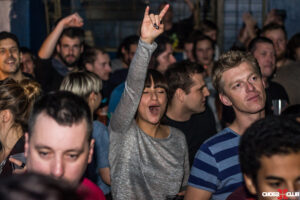 The media here in the Czech Republic has connected techno scene to the CzechTeks and other freetekno parties that take up only a fraction of what electronic dance music offers.
The media here in the Czech Republic has connected techno scene to the CzechTeks and other freetekno parties that take up only a fraction of what electronic dance music offers.
The atmosphere of any dance event playing techno in Prague has been outlined as a crazy drug party, portraying its participants as strange individuals. All that under the name of a techno party.
No wonder the disoriented society has a negative image of techno in Prague and the other Czech cities. But what is really techno, without myths and prejudices?
How does techno sound and what is its main idea?
The term techno was created by the shortening of the word technological. So this music somehow deals with technology and the industrial society through futuristic sounds. The main idea of techno was to reconcile man and machine- give the machine a soul. In music, this is not the first time that people and technology meet. This direction has been represented by avant-garde artists since the early 20th century.
It’s the music where background for synthetic sounds is a rhythmic pattern filled with a strictly ostinated beat of a bass drum that strikes at all times in a 4/4 meter. Bass drum blows are most often complemented by hi-hat sound. It fills in rhythmic figurations between the main periods. The typical pace of the classic techno is between 140-160 BPM. The construction of the techno track is very detailed.
Origin of Techno
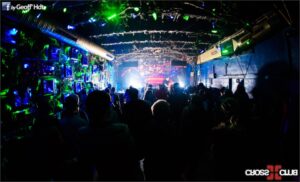 Techno was born and raised in the mid-1980s in Detroit. It incorporated the influences of Kraftwerk’s German electronic pioneers (combining African-American feelings for rhythm and European approach to harmony and melody), George Clinton’s funk and Gary Numan’s emotion-free music.
Techno was born and raised in the mid-1980s in Detroit. It incorporated the influences of Kraftwerk’s German electronic pioneers (combining African-American feelings for rhythm and European approach to harmony and melody), George Clinton’s funk and Gary Numan’s emotion-free music.
The character of the city of Detroit appeared to have a key role in the origin of this “technological music”.
It was a city living of automobile industry with many African-American citizens. People there were used to work in the factory where computers and robots were handled. A young generation grew up with prerequisites for a culture of materialism.
But suddenly the city had overcome a dramatical transformation. It found itself in a state of total devastation. Automobile factories closed and everyone who could afford it moved away. Detroit began to face serious social and economic problems.
In the 1980s, on those ruins, techno emerged as a perfect antithesis of soul music popular until now. A style depicting a de-humanized man in conjunction with a humanized machine.
Three techno pioneers
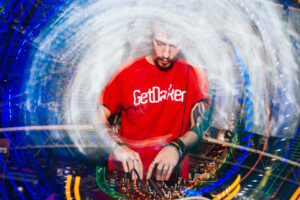 Kevin Saunderson, Derrick May and Juan Atkins promoted their music in clubs and radio. In Detroit’s clubs, their music was not very successful. However, 3 DJs have been invited to London several times to enrich the local scene. The invitation first accepted Derrick May with his techno compilation. The new dance sound of Detroit not only infected London clubs but also Europe as a whole. Detroit DJs have become a stars in Europe.
Kevin Saunderson, Derrick May and Juan Atkins promoted their music in clubs and radio. In Detroit’s clubs, their music was not very successful. However, 3 DJs have been invited to London several times to enrich the local scene. The invitation first accepted Derrick May with his techno compilation. The new dance sound of Detroit not only infected London clubs but also Europe as a whole. Detroit DJs have become a stars in Europe.
Synthesizers are used in techno
The development of techno is closely connected with development of synthesizers and samplers. In the 1970s Roland77 company started producing drum automats. They came first with CR-68 and CR-78,- the microprocessor vending machines. Then in 1980, the company developed the TR-808 type, but was criticized for the unrealistic drum sound.
However, because of its lower price, it came into use despite its metallic and squeaking sounds.
Later TR-909 replaced it with a distinctive clapping sound instead of a small drum. 808 and 909 models were the ones which the first techno producers worked with the most.
Types of techno
All styles have undergone a lot of expansion during their time. Techno has spread from Detroit to all of America, Europe and Asia and has found a solid base of listeners and producers.
Its substyles began to be strongly influenced by geographical location. There is no other style in which the difference between individual “national” offshoots would be so noticeable like in techno
Detroit techno
Detroit techno had two forms. The dark, isolated, mechanical sound color responded to the end of prosperity of the city in the late 1970s and the subsequent economic collapse. On the contrary, we could find bright, soft sound positions nearing to the Chicago house.
Acid techno
Although the acid sound is not specific for techno it is particularly popular in hardcore hard acid techno. First, the word acid appeared in the mid-1980s in relation to house. The acid house soon became a phenomenon. From the friendly soft rhythm of the Chicago House, the eccentric sound of acid was transferred to the cold background of harder techno. The result has been and still is celebrated to this day. Although acid techno originated in the early 1990s, it is still popular and lives with its own life at underground events and freetekno party. The acidic, poisonous sound dominated by the bass line was made exclusively on the Roland TB-303 synthesizer made in 1982. No other instrument could imitate this unique sound. TR-808 and TR-909 served here to create rhythm.
Schranz/Hardtechno
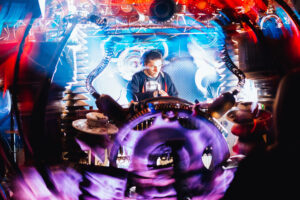 This is a very tough techno branch. Schranz is considered synonymous with hard techno by some, and distinguished from it by others (it is supposed to be harder and darker hard techno).
This is a very tough techno branch. Schranz is considered synonymous with hard techno by some, and distinguished from it by others (it is supposed to be harder and darker hard techno).
Its speed variates in the range of about 140-170 BPM
We can recognize it by its “dirty” sound, given by the high density of variously filtered beats. Most of the keystrokes are distorted by digital effects, and it gives the schranz a dark, shrill colour of sound. As if you rub two rough surfaces, complemented by pure bass beat and high cymbidium cymbals.
The term schranz was created between 1997 and 1999 during the broadcast of the Sonic radio – the only radio in Europe dedicated to electronic dance music.
What is the difference in between Freetekno and Techno?
Tekno differs from techno in just one letter, but it conceals a noticeable difference. Tekno is much faster than techno (harder substyles of tekno can reach speeds of up to 220 BPM.)
In total, it uses darker sounds, a heavily loaded, dense and centralized strike of a large drum, the classical, unmodulated sound of a small drum, hi-hats and cymbals.
On this rhythmic background, denatured sounds occur. If there is any human voice in the music, then we can only hear it in short monotone repeating phrases. The percussion shades in the tekno are not aggressively sharp and although the music is very fast and hard, it is not offensive.
Where did Freetekno come from?
Freetekno subculture was formed around 1988, when the second summer of love took place in Britain. It was a time when rave music laid the foundations of a new era of club music and dance music culture.
Rave did not just refer to the music field. It included political attitudes against capitalist individualism.
It did not become the subculture in its own sense as its fans lacked the uniformity of dressing and the expression of resistance to the society.
Those ideals were followed by the style of hard techno – tekno . In Britain a subculture formed around it began to organize festivals of an independent techno. Due to frequent crossing of the law, they were prosecuted.
In 1993 the controversy culminated in the adoption of the Criminal Justice Act. It banned the organization of all free parties throughout the United Kingdom. Due to the violent repression, many sound systems, such as the famous Spiral Tribe, have left the country and have spread throughout the world. They began organizing new types of techno parties that were free and alternative. A new free party movement was born.Throughout Europe, new sound systems began to form, and they wanted to hold their own free parties.
Philosophy behind freetekno
Young people had the desire to distance themselves from their upbringing in capitalist society. They were influenced by anarchism, and this way of life – living in a squat, traveling and organizing a party – was literally tailored to them. Already from the beginning, they were given the mark that they did not comply with established behavioral norms. It was mainly because of their open relationship to drugs. 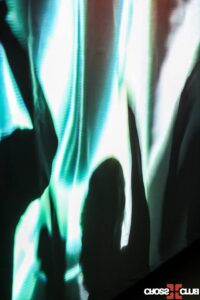
Sound systems did not deny use of illegal drugs at the parties, and many of them admitted to have the main financial income from their sales.
In difference to rave culture, the Sound Systems Company has operated on the principle of self-financing. They themselves, according to the slogan of Do It yourself, built the speakers and sound apparatures. And as there was a rule of zero admission to the parties, only money from drug sale could help them to keep running.
After massive waves of arresting and constant persecution, the sound systems were forced to gradually begin to hold a commercialized party where the entrance fee was charged. The free party phenomenon was over.
But not for long. It expanded further to the east, where the whole process took place from beginning- for example in BulgariaTek (Bulgarian teknival), Slovtek (Slovak teknival), PolTek (Polish teknival)
Techno in Prague (and the Czech Republic in general)
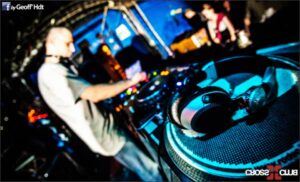
Techno in Prague
Although techno in Prague is not a club mainstream genre, it still attracts a lot of traffic and literally fills up the halls.
Legendary Czech parties and festivals in the past
From all the hall events promoting techno in the Czech Republic as one of the most special we can consider the Brno’s Apocalypse. It is the only party taking place since 1999 without a longer pause and attracting thousands of visitors every year.
For thirteen years running it has been bringing to the Czech Republic the biggest stars of techno and hardcore such as Jeff Mills, Kevin Saunderson, Umek, Pet Duo, Rush, Space DJz, etc.
This year on 30.11. 2018 it will be hosting Carl Craig- one of the most prominent figures of second wave of Detroit techno.
It is a honor for most of Czech techno DJs to play in the Apocalypse.
However, the Apocalypse was not the first big party here. Since 1997 the original Moravian Hall event Supersonic Garage took place. It was organized by Pavel Tesař. He was already from the beginning of the 1990s, regularly organizing events in cooperation with G-production at the big Mácháč festival.
Another celebrated party in the Brno area was the Citadel which, unfortunately lost a competitive fight with the Apocalypse and in 2005 stopped being runned for a while.
Then the license for its organizing was purchased by the First Independent Promoter Group and Citadel’s existence has been restored.
In addition to these two legendary parties, the audience in Brno could experience several other events, which over the years have arisen and disappeared.
Techno in Prague has stayed a little behind.
 A few large by size but not that famous events were hosted in the Veletržní Palace, Industrial Palace, Abaton or Karlovy Lázne. In addition, there has been countless of small club events promoting techno in Prague.
A few large by size but not that famous events were hosted in the Veletržní Palace, Industrial Palace, Abaton or Karlovy Lázne. In addition, there has been countless of small club events promoting techno in Prague.
In 1996 the Pardubice’s open air party Sunrising started the new tradition of techno / house festivals.
A year later, a small,insignificant event called Summer’97- the ancestor of the Summer of Love immortal festival, took place. Ten years later, more than ten thousand people visited Summer of love. The festival began focusing on house and techno but over time covered the entire electronic dance music style range.
Most of the local dance multi-genre festivals such as Hradhouse, Creamfields Cosmic Trip, Summer Session, etc. were focusing on techno
The first exclusively techno festival
Svojšice was held in Svojsice near Pardubice in 2000 and it continues running till this day. Although by the time it was enriched by the house and drum and bass stage, it it did not make it less attractive for its visitors.
Other major festivals in the country include Mácháč, which focuses more on trance.
In addition to legally organized parties, there has been occasions when the Czech Republic hosted underground, often illegal, events.
What was Czech tek?
From 1994 to 2006 it presented the world-renowned CzechTek teknival.
In 1994, legendary sound systems Spiral Tribe and Mutoid Waste Company arrived to Bohemia, settling in the Ladronka squad. They expressed local people the magic of the tekno which subsequently resulted in the first CzechTek.
Initially, it was a smaller legal party in former military buildings but with the rapid increase of participants teknival moved to the meadows and continued illegally.
The police intervention and the end of Czech Tek
The most controversial year was 2005, which, according to the organizers, was organized on legally leased land. Yet more than 1,000 police patrols arrived to the party with an aim to stop it by any means- using heavy techniques, tear gas and waterworks.
The incident brought endless discussions on the political field. It signified an important change for the entire tekno community and largely affected also techno in Prague and the whole Czech Republic.
The next year ‘s party was quietly attended by 40,000 people. However, the CzechTek era ended here as the teknival was closely monitored by media and people who came “just to have a look”did not have anything to do with tekno music- they were here just out of curiosity, destroying the “intimate” atmosphere of the community. It killed the desire of the founders to organize this party for more years.
A few legendary Czech techno DJs
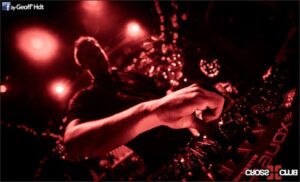 There is a lot of DJ’s producing techno in Czech circles. One of really pioneering names to mention is for example DJ Agent, who has been on the stage since 1995. Now he is not only an active DJ but also a promoter, organizing events throughout the Czech Republic, such as Techno Masters
There is a lot of DJ’s producing techno in Czech circles. One of really pioneering names to mention is for example DJ Agent, who has been on the stage since 1995. Now he is not only an active DJ but also a promoter, organizing events throughout the Czech Republic, such as Techno Masters
At the awakening of the Czech scene was also the DJ and promoter Jerry, who had been behind the DJ’s counter since 1993, DJ Pavel Krejdl, performing under the Techno.cz website, or currently less active DJ Kaisersoze.
Another high-quality Czech DJ is Steen, who has been working for last couple of years together with DJ Spiriakos, producing their sets and promoting them around Europe.
The West Bohemian scene is represented by DJ and producer Drex, Jamal DJs – Jacker and Malda or JayBeck.
A few famous Czech schranz DJ’s
In addition to techno, schrantz has also grown up in recent years thanks to the DJ Golpe, 96 Destroyer- both of whom present their works as a part of foreign labels and are administrators of Schranz.cz.
Schranz is also represented by Czech DJs Peca (also involved in Schranz.cz) or Kesz.
Well-known in Brno isDJ is B.Unq!, which has become a resident hard techno DJ of the prestigious Ukrainian Kazantip festival.
Famous Czech sound systems
We must not forget the freetekno DJs, who mostly work as a part of sound systems. The well known group is Circus Alien, Technical Support, Mayapur and one of the oldest on our scene. Furthermore, NSK, Metro, Strahov, Oktekk and many others.
The coolest clubs playing electronic music and techno in Prague
Ankali
Currently considered one of the greatest techno venues. Hosts well known techno names in the authentic underground atmosphere. It’s a place to go when you look for something real with not too many tourists around and truly fantastic music. Our n. 1.
Their program
How to get there from the city center:
By tram: take n. 6 from Namesti Republiky( where is Palladium shopping center) to the tram stop Bohemians
By metro: get from wherever you are to the red metro( C) stop I.P.Pavlova and from there take a tram n. 6 to Bohemians tram stop
By uber: adrese is Lopuchova 6
It’s also worth to check the neigborhood once you are there- it’s the most hipster kind of area in the whole Prague 🙂
Pokojicek
Fantastic multipurpose premises serving to different kind of workshops and electronic music performances. Far from the city center but definitely worth the journey.
Their program
How to get there from the city center:
By tram: from the Karlovy lazne tram stop ( which is the nearest one to the Charles bridge on the old town side) take n 17 tram going to the tram stop Belarie
By metro: From the yellow ( B) metro stop Palackeho namesti( where is the dancing building) take a tram n. 17 to Belarie tram stop
By uber: adrese is: Mezi vodami 35
The place is fantastic for finding great techno in Prague but it is in the middle of nowhere so don’t plan any sightseeing in the area
Vlkova 26
Great place with fantastic electronic dance music in the middle of vibrant Zizkov neighborhood. Chill friendly atmosphere. Everyone who likes techno in Prague and is cool goes here sometimes:)
Their program
How to get there from the city center:
By tram: Take n. 26 tram from Namesti Republiky( where is Palladium shopping center) to the tram stop Husinecka and climb a little hill. The place is located in the down area of the hill so it isn’t any mega hike
By metro: from Hlavni nadrazi ( main train station)red metro stop cross the park to the tram stop and take n. 26 or 9 to the Husinecka stop
By uber: adrese is: Vlkova 26
Zizkov neighberhood is truely fantastic place to explore. There is more little hidden bars than you can imagine!
Storm
Another excellent electronic music venue which kind of took over from legendary Acropolis club. Much more commercial than the previous three but still worth to see.
Their program
How to get there from the city center:
By bus: from Namesti Republiky( Palladium shopping center) take n. 207 to the bus stop Tachovske namesti
The same bus you can take from the yellow( B) metro stop Florenc
By uber: adrese is: Tachovske namesti 5
Klubovna druhe patro
Great hidden spot in the most central area of the city hosting different DJs every weekend. Of course, due to its location much more crowded by tourists than any previously mentioned clubs but still favorite place of many locals.
Their program
How to get there from the city center:
It’s in the heart of the city so no need of public transport, you can just walk. Its located on Dlouha street ( Koh san road of Prague:)n. 37 on the second floor( from that is the name Druhe patro- means Second floor)
Famu club
New star on a Prague’s club heaven. Place which we used to visit 10 years ago as a little nothing special student cheep hole completely changed becoming a right place to be.
In this club they don’t focus only on the electronic music but also host different live bands. Proper underground hidden in the close proximity to the city center.
Their Program
How to get there:
By tram: take n 17 tram from Staromestska or Karlovy lazne stop to the Narodni divadlo stop
Walking: from the Charles bridge you can just walk 10 min. around the river on the Old town side. It’s a really nice walk with literally postcard views so we highly recommend it
By metro: From the yellow( B) metro stop Narodni trida you can walk 5 min. towards National Theatre. Club Famu is sharing a building with Cafe Slavia.
By uber: The adrese is: Smetanovo nabrezi 2
Mono fono
Nice funky place hosts excellent Djs, concerts and art exhibitions. You can feel spirit of real- non touristy Prague here. The only down site is that they are closing very early on the weekends. Currently at 17:00 in the afternoon! Very strange but check it out maybe it has already changed until you read this.
Their Program
How to get there:
By tram: Take n.6 tram from Namesti Republiky( Palladium) to the tram stop Vodickova and walk for 2 min.
By metro: you can walk from the nearest metro stop which is mustek( the yellow B)- its just a few min. Walk to Jungmanova
By uber: the adrese is Jungmanova 15
Top electronic music clubs in Brno
Here we don’t know that many venues but we can mention at least two fantastic ones.
Kabinet muz
Club open to a big variety of alterntive music and theatre regularilly hosting local and foreign stars.
Their program
How to get there:
By tram: its very close to Malinovskeho namesti tram stop. From the main square Namesti Svobody you can get there directly by n. 4
By uber: The adrese is Sukova 4
Fleda
It would be imperdonable to consider only clubs playing techno in Prague and not to mention this place with its fantastic club nights Electra and Vendeta and Festival of electronic music Echoes. BIG TIME worth of visiting when in Brno.
Their program
How to get there:
By tram: from the tram stop Ceska on Namesti svobody take tram n. 6 directly to the Hrncirska stop
By Uber: The adrese is Stefanikova 24

